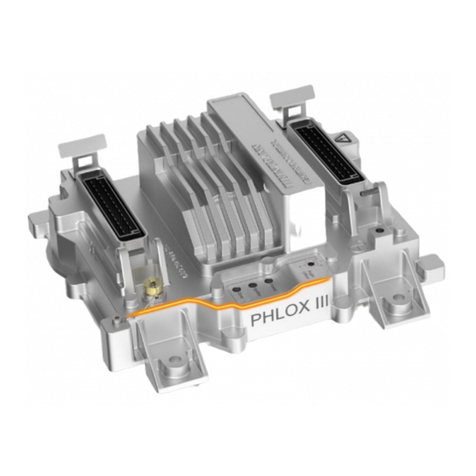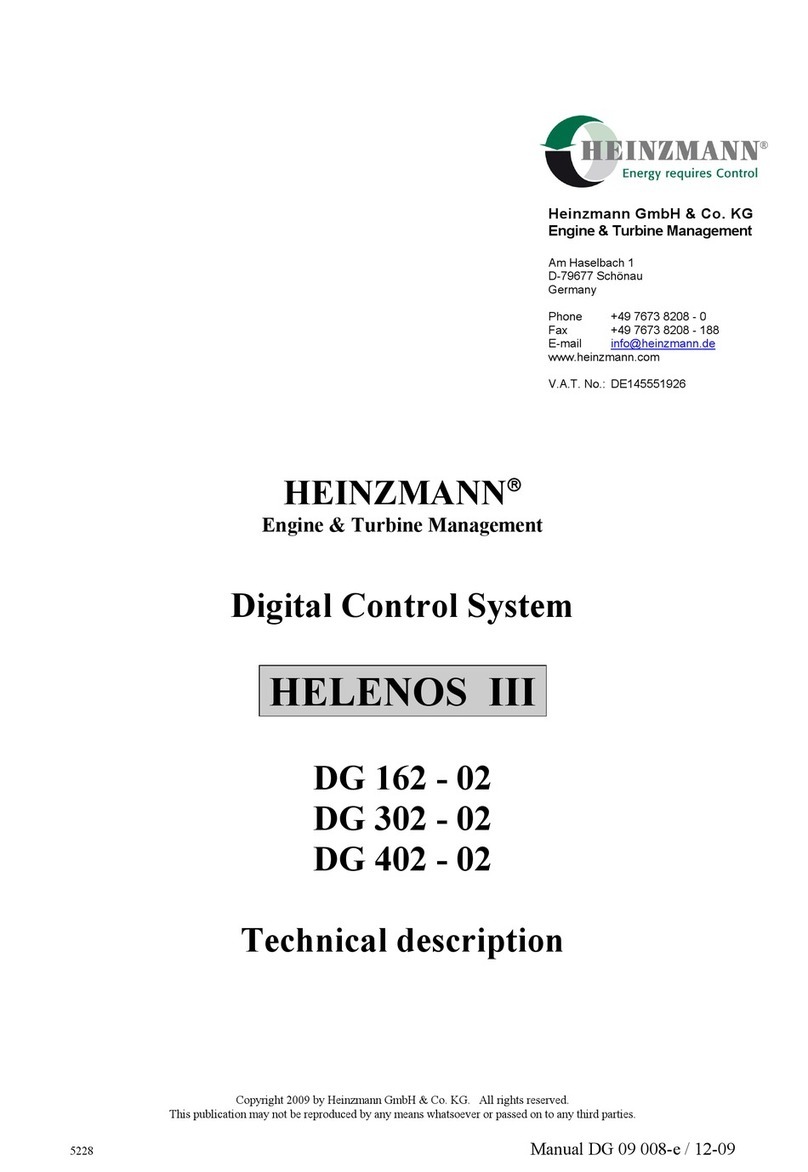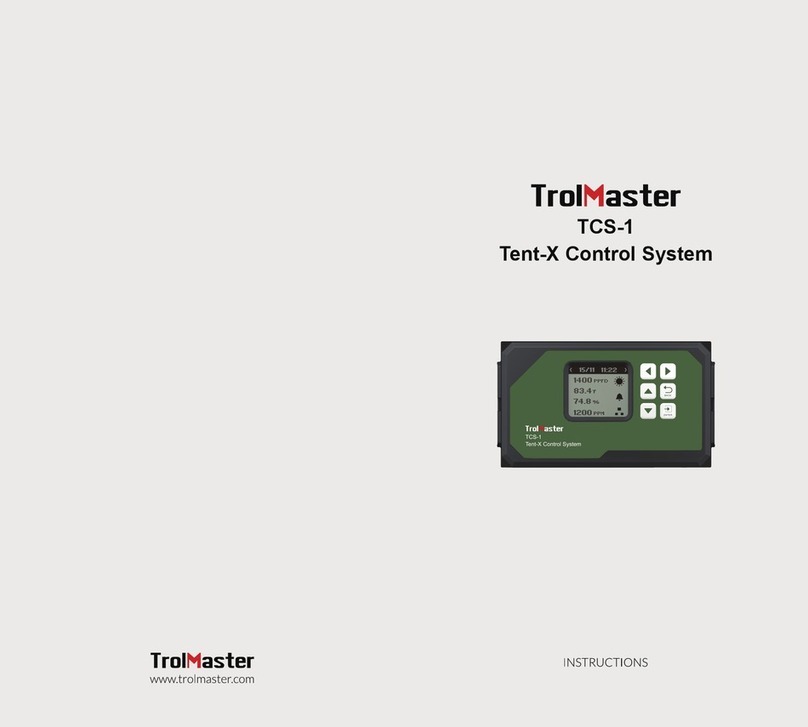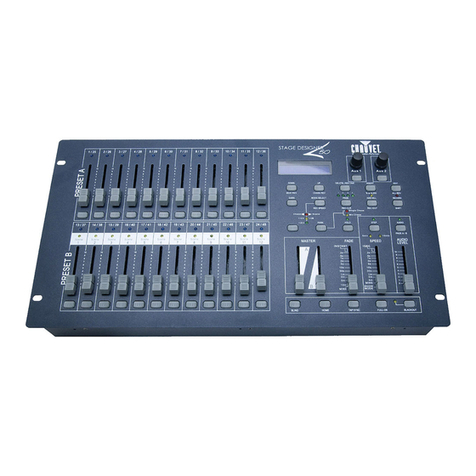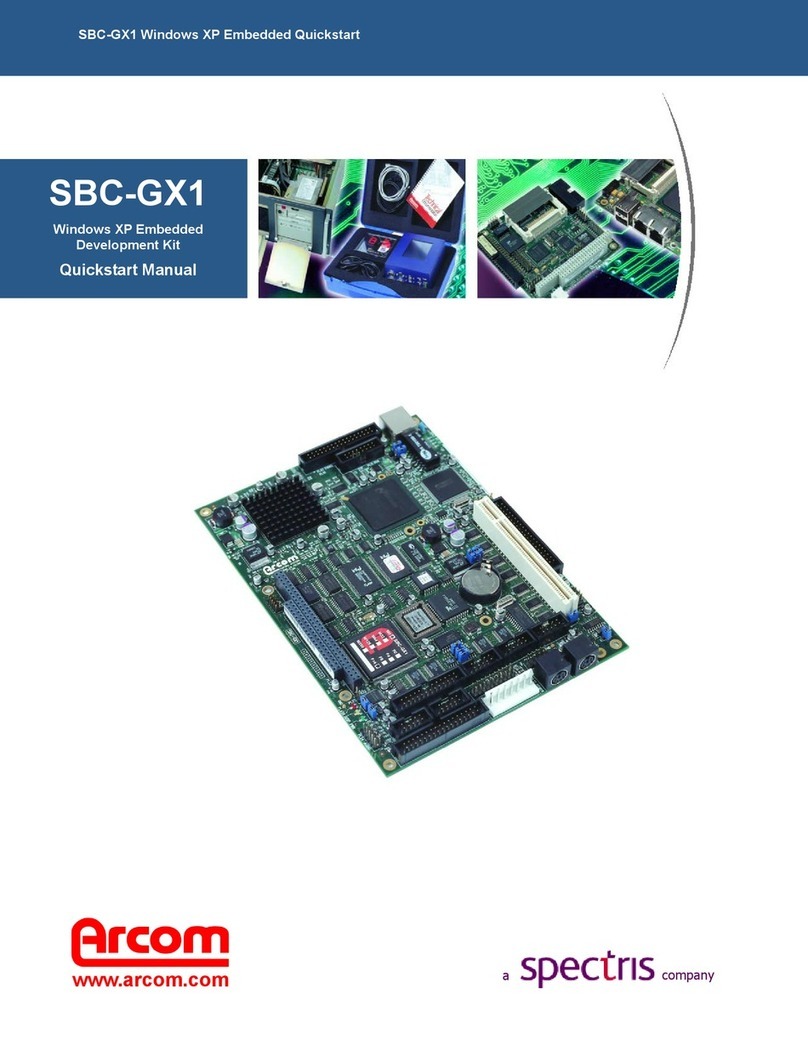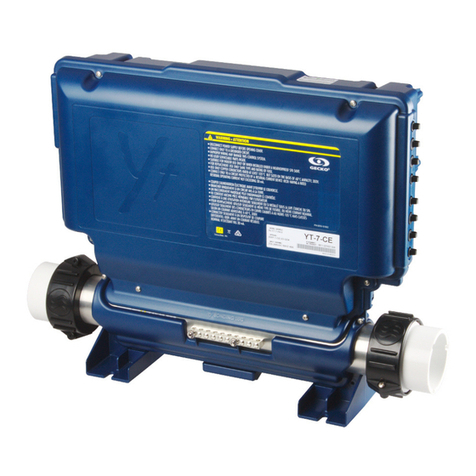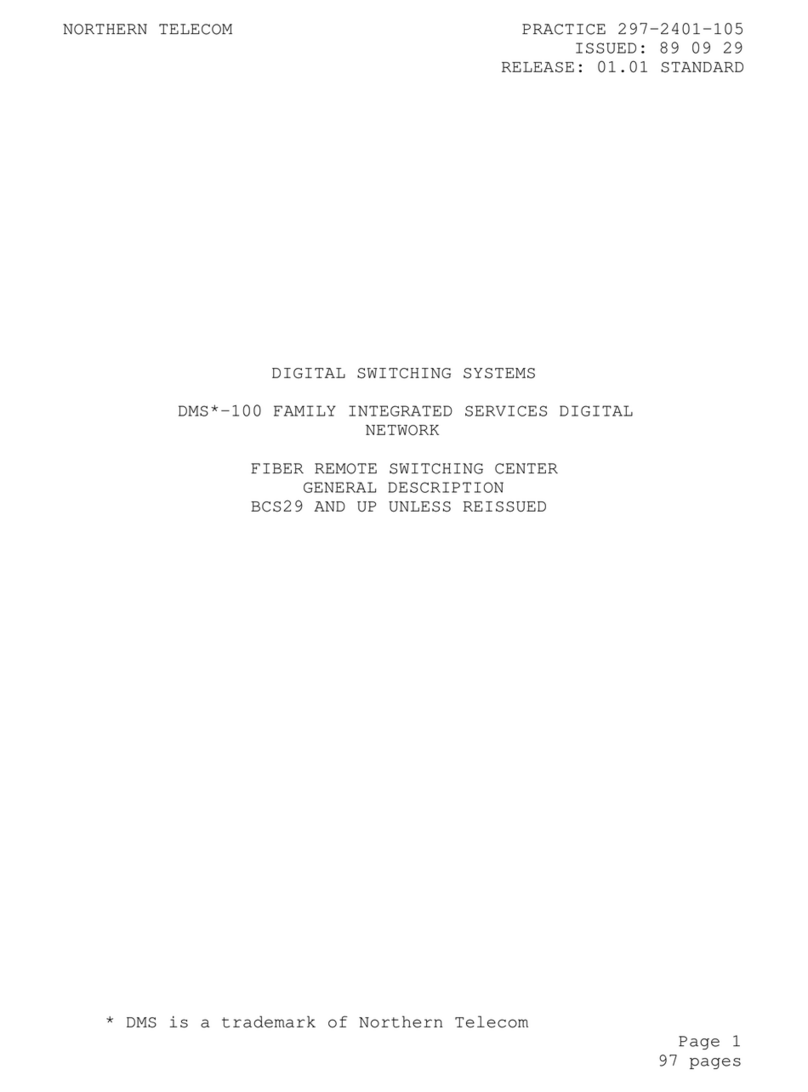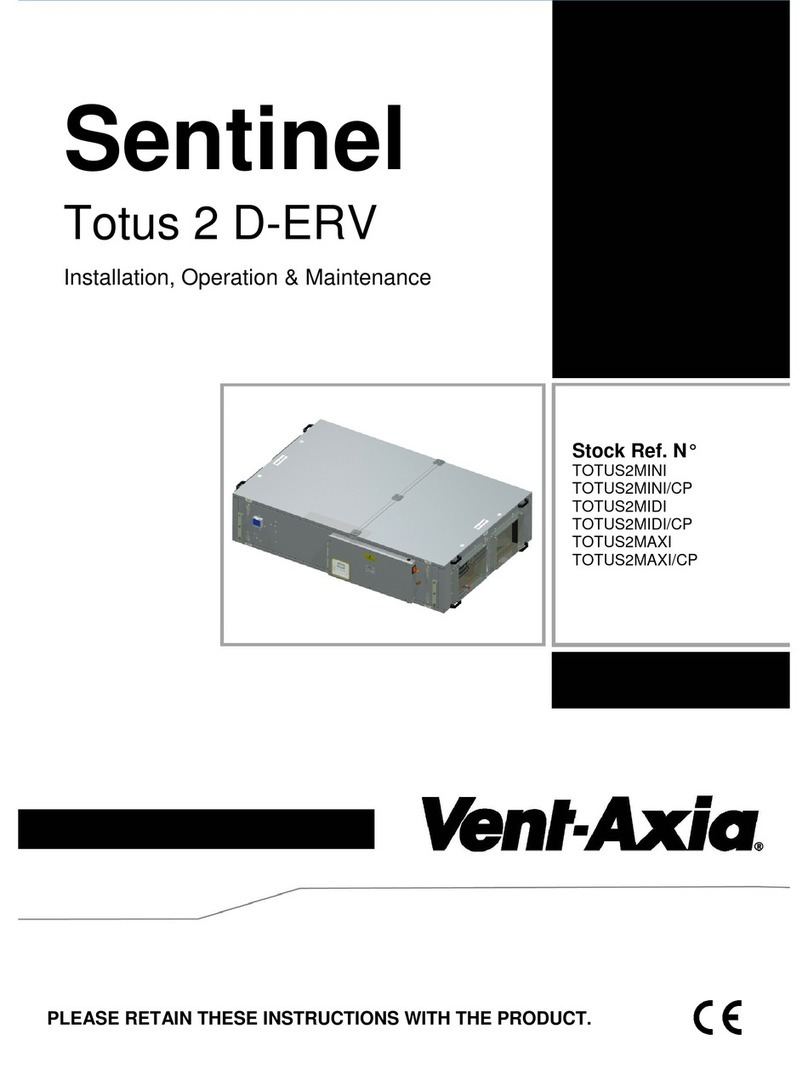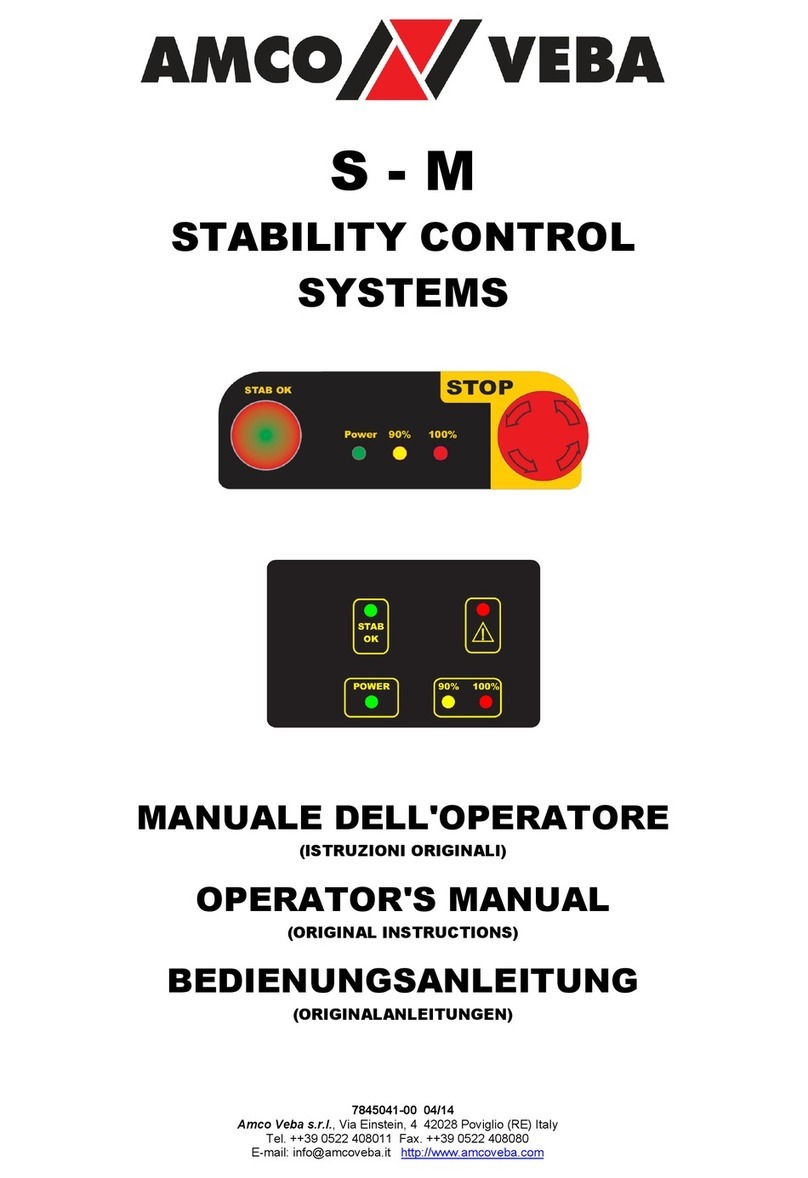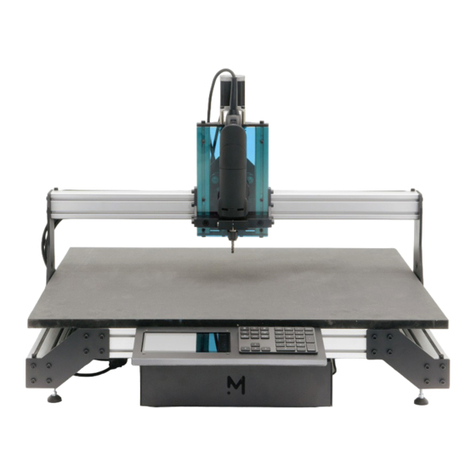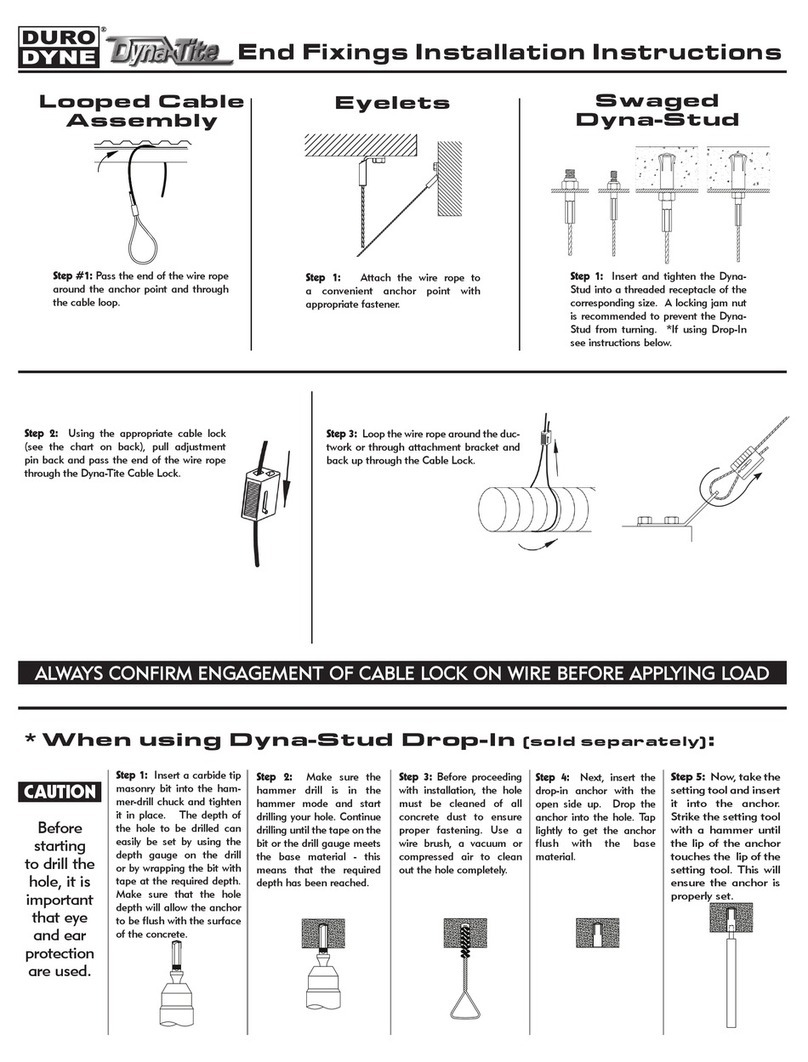Heinzmann KRONOS 20 User manual

Heinzmann GmbH & Co. KG
Engine & Turbine Controls
Am Haselbach 1
D-79677 Schönau (Schwarzwald)
Germany
Phone +49 7673 8208-0
Fax +49 7673 8208-188
www.heinzmann.com
V.A.T. No: DE145551926
HEINZMANN®
Engine & Turbine Controls
KRONOS 20
Electronically controlled
Air Fuel Ratio Control System
for Gas Engines
with open / closed Control Loop
Copyright 2007 by Heinzmann GmbH & Co. KG All rights reserved. This publication may not be reproduced by any means whatsoever or
passed on to any third parties.
Manual AFR 03 002-e / 01-08


Read this entire manual and all other publications appertaining to the
work to be performed before installing, operating or servicing your
equipment.
Practice all plant and safety instructions and precautions.
Failure to follow instructions may result in personal injury and/or dam-
age to property.
HEINZMANN will refuse all liability for injury or damage which re-
sults from not following instructions
Please note before commissioning the installation:
Before starting to install any equipment, the installation must have been
switched dead!
Be sure to use cable shieldings and power supply connections meeting
the requirements of the European Directive concerning EMI.
Check the functionality of the existing protection and monitoring sys-
tems.
To prevent damages to the equipment and personal injuries, it is
imperative that the following monitoring and protection systems
have been installed:
Overspeed protection acting independently of the speed governor
Overtemperature protection
HEINZMANN will refuse all liability for damage which results from
missing or insufficiently working overspeed protection
Generator installation will in addition require:
Overcurrent protection
Protection against faulty synchronization due to excessive frequency,
voltage or phase differences
Reverse power protection
Overspeeding can be caused by:
Failure of the voltage supply
Failure of the actuator, the control unit or of any accessory device
Sluggish and blocking linkage
Warning
Danger
Danger
Danger!
High
Voltage
Danger

The examples, data and any other information in this manual are in-
tended exclusively as instruction aids and should not be used in any
particular application without independent testing and verification by
the person making the application.
Independent testing and verification are especially important in any ap-
plication in which malfunction might result in personal injury or dam-
age to property.
HEINZMANN make no warranties, express or implied, that the exam-
ples, data, or other information in this volume are free of error, that
they are consistent with industry standards, or that they will meet the
requirements for any particular application.
HEINZMANN expressly disclaim the implied warranties of merchant-
ability and of fitness for any particular purpose, even if HEINZMANN
have been advised of a particular purpose and even if a particular pur-
pose is indicated in the manual.
HEINZMANN also disclaim all liability for direct, indirect, incidental
or consequential damages that result from any use of the examples,
data, or other information contained in this manual.
HEINZMANN make no warranties for the conception and engineering
of the technical installation as a whole. This is the responsibility of the
user and of his planning staff and specialists. It is also their responsibil-
ity to verify whether the performance features of our devices will meet
the intended purposes. The user is also responsible for correct commis-
sioning of the total installation.
Warning
Danger

Contents
KRONOS 20
Contents
Page
1 Safety Instructions and Related Symbols............................................................................ 1
1.1 Basic Safety Measures for Normal Operation................................................................. 2
1.2 Basic Safety Measures for Servicing and Maintenance .................................................. 2
1.3 Before Putting an Installation into Service after Maintenance and Repair Works.......... 3
2 General ................................................................................................................................... 4
2.1 System Characteristics..................................................................................................... 4
2.2 Applications..................................................................................................................... 4
2.3 System Components ........................................................................................................ 5
2.4 System Specifications...................................................................................................... 5
2.5 Operational Principle.......................................................................................................6
2.6 General Application.........................................................................................................7
2.7 Additional Functions ....................................................................................................... 8
2.8 Gas Train ......................................................................................................................... 9
3 Sensors.................................................................................................................................. 10
3.1 Overview Table ............................................................................................................. 10
3.2 Speed Pickup IA…........................................................................................................ 10
3.2.1 Technical Data ....................................................................................................... 10
3.2.2 Mounting Position.................................................................................................. 11
3.2.3 Tooth Shape ........................................................................................................... 11
3.2.4 Distance of the Speed Pickup ................................................................................ 11
3.2.5 Dimensional Drawing............................................................................................ 12
3.2.6 ATEX Certification of Speed Pickups................................................................... 13
3.3 Double Sensor P/T-S-01 for Pressure and Temperature Measurement in Intake
Manifold .............................................................................................................................. 13
3.3.1 Technical Data ....................................................................................................... 13
3.3.2 Dimensional Drawing............................................................................................ 14
3.3.3 Mounting................................................................................................................ 14
3.3.4 ATEX Certification for Double Sensor P/T-S-01.................................................. 15
3.4 λSensor LSM 11 for Exhaust Gas Measurement (optional)......................................... 15
3.4.1 Technical Data ....................................................................................................... 15
3.4.2 Dimensional Drawing............................................................................................ 17
4 Control Unit KRONOS 20.................................................................................................. 18
4.1 Technical Data............................................................................................................... 18
4.1.1 General................................................................................................................... 18
4.1.2 Inputs and Outputs................................................................................................. 19

Contents
KRONOS 20
4.2 Dimensional Drawing.................................................................................................... 20
4.3 Mounting Position ......................................................................................................... 22
5 Gas Valves E-LES ............................................................................................................... 23
5.1 Structure and Operating Principle ................................................................................. 23
5.2 Technical Data............................................................................................................... 24
5.2.1 Specifications for all E-LES Gas Valves............................................................... 24
5.2.2 Additional Specifications for Gas Valve E-LES 30 .............................................. 25
5.2.3 Additional Specifications for Gas Valve E-LES 50 .............................................. 25
5.2.4 Additional Specifications for Gas Valve E-LES 80 .............................................. 25
5.3 Dimensional Drawings .................................................................................................. 26
5.4 Mounting ....................................................................................................................... 29
5.5 ATEX Certification of E-LES… Gas Valves................................................................ 29
6 Electric Connection ............................................................................................................. 31
6.1 Wiring Diagrams ........................................................................................................... 32
6.1.1 Wiring Diagram for KRONOS 20 with open Loop............................................... 32
6.1.2 Wiring Diagram for KRONOS 20 with closed Loop (power signal, CH4
signal).............................................................................................................................. 33
6.1.3 Wiring Diagram for KRONOS 20 with λ-Sensor Signal ...................................... 34
6.2 Cable Harness................................................................................................................ 35
6.3 Enclosed Cables............................................................................................................. 36
6.3.1 Cable W2 to Gas Valve E-LES.............................................................................. 36
6.3.2 Cable W3 to Pressure / Temperature Sensor P/T-S-01.......................................... 37
6.3.3 Cable W4 to Speed Pickup IA… ........................................................................... 38
6.3.4 Cable W5 to λ-Sensor LSM 11.............................................................................. 39
7 Parameter Settings for Control Unit KRONOS 20.......................................................... 40
7.1 Parametrization with the Hand Held Programmer 3 ..................................................... 40
7.2 Parametrization with the PC / Laptop ........................................................................... 40
8 General Mounting Instructions.......................................................................................... 41
9 Commissioning .................................................................................................................... 42
9.1 General Safety Information for Commissioning ........................................................... 42
9.2 General Information on the first Engine Start ............................................................... 42
9.3 Commissioning for OPEN LOOP (open control circuit) .............................................. 43
9.4 Further Commissioning for CLOSED LOOP (closed control circuit) with Output
Power 45
9.5 Further commissioning for CLOSED LOOP with λ1 control (KRONOS 20 version
with λ1 sensor) 47

Contents
KRONOS 20
10 Misfire Detection (optional).............................................................................................. 49
10.1 General ........................................................................................................................ 49
10.2 Putting into Operation ................................................................................................. 49
11 Operation ........................................................................................................................... 51
12 Maintenance and Service.................................................................................................. 52
13 Error Handling.................................................................................................................. 53
13.1 General ........................................................................................................................ 53
13.2 Categories of Errors und Emergency Operation after System Failure ........................ 53
13.3 Error Memories ........................................................................................................... 55
13.4 Bootloader ................................................................................................................... 56
13.4.1 Bootloader-Start Tests ......................................................................................... 56
13.4.2 Bootloader Communication................................................................................. 57
13.5 Error Parameter List .................................................................................................... 58
14 Parameter Description...................................................................................................... 65
14.1 Synoptical Table.......................................................................................................... 65
14.2 List 1: Parameters........................................................................................................ 70
14.3 List 2: Measurements .................................................................................................. 77
14.4 List 3: Functions.......................................................................................................... 89
14.5 List 4: Characteristics and Maps ................................................................................. 92
15 Figure List.......................................................................................................................... 94
16 EC Declaration of Conformity ......................................................................................... 95
17 Order Form for KRONOS Systems ................................................................................ 96
18 Order Specifications for Manuals.................................................................................... 97


1 Safety Instructions and Related Symbols
KRONOS 20 1
1Safety Instructions and Related Symbols
This publication offers wherever necessary practical safety instructions to indicate inevitable
residual risks when operating the engine. These residual risks imply dangers to
persons
product and engine
environment.
The symbols used in this publication are in the first place intended to direct your attention to
the safety instructions!
This symbol is to indicate that there may exist dangers to the engine, to the
material and to the environment.
This symbol is to indicate that there may exist dangers to persons. (Danger
to life, personal injury)
This symbol is to indicate that there exist particular danger due to electri-
cal high tension. (Mortal danger).
This symbol does not refer to any safety instructions but offers important notes for
better understanding the functions that are being discussed. They should by all
means be observed and practiced. The respective text is printed in italics.
The primary issue of these safety instructions is to prevent personal injuries!
Whenever some safety instruction is preceded by a warning triangle labelled “Danger” this is
to indicate that it is not possible to definitely exclude the presence of danger to persons, en-
gine, material and/or environment.
If, however, some safety instruction is preceded by the warning triangle labelled “Caution”
this will indicate that danger of life or personal injury is not involved.
The symbols used in the text do not supersede the safety instructions. So please do not
skip the respective texts but read them thoroughly!
Note
Warning
Dan
g
er
Danger!
High
V
olta
g
e

1 Safety Instructions and Related Symbols
2KRONOS 20
In this publication the Table of Contents is preceded by diverse instructions that
among other things serve to ensure safety of operation. It is absolutely imperative
that these hints be read and understood before commissioning or servicing the
installation.
1.1 Basic Safety Measures for Normal Operation
•The installation may be operated only by authorized persons who have been duly
trained and who are fully acquainted with the operating instructions so that they are
capable of working in accordance with them.
•Before turning the installation on please verify and make sure that
- only authorized persons are present within the working range of the engine;
- nobody will be in danger of suffering injuries by starting the engine.
•Before starting the engine always check the installation for visible damages and make
sure it is not put into operation unless it is in perfect condition. On detecting any faults
please inform your superior immediately!
•Before starting the engine remove any unnecessary material and/or objects from the
working range of the installation/engine.
•Before starting the engine check and make sure that all safety devices are working
properly!
1.2 Basic Safety Measures for Servicing and Maintenance
•Before performing any maintenance or repair work make sure the working area of the
engine has been closed to unauthorized persons. Put on a sign warning that mainte-
nance or repair work is being done.
•Before performing any maintenance or repair work switch off the master switch of the
power supply and secure it by a padlock! The key must be kept by the person perform-
ing the maintenance and repair works.
•Before performing any maintenance and repair work make sure that all parts of engine
to be touched have cooled down to ambient temperature and are dead!
•Refasten loose connections!
•Replace at once any damaged lines and/or cables!
•Keep the cabinet always closed. Access should be permitted only to authorized per-
sons having a key or tools.

1 Safety Instructions and Related Symbols
KRONOS 20 3
•Never use a water hose to clean cabinets or other casings of electric equipment!
1.3 Before Putting an Installation into Service after Maintenance and Repair
Works
•Check on all slackened screw connections to have been tightened again!
•Make sure the control linkage has been reattached and all cables have been recon-
nected.
•Make sure all safety devices of the installation are in perfect order and are working
properly!

2 General
4KRONOS 20
2General
2.1 System Characteristics
•Affordable and trustworthy electronic Lambda control system
•Improved starting, idling, synchronizing and load behaviour
•Freely parametrizable, load and speed dependent mixing ratio map
•Cold start enrichment possible
•Easy adaptation to different engine and gas types, requiring only minor parameter
modifications
•Only three sensors are required accordingly simple installation and reliable operation
•Simple and easy parameter setting and diagnosis with HEINZMANN
DcDesk 2000 communications software
Optional:
- Communication with handheld programmer HEINZMANN HP-03
or the optional integrated programmer
- CAN communication
•Extends application range of existing gas mixers mixing inserts therefore may be used
for different gas qualities within a certain range
•The mixture control systems as a trimming system is largely self-regulating on basis of
Bernoulli’s Law, thus avoiding constant movement of the regulating valve, to best ad-
vantage of control stability.
•In case of error, the mixture control system can be operated by hand in the conventional
way.
•The closed-loop version may be regulated via the power signal, an oxygen sensor or via
a CH4signal.
•Optional misfire detection is possible.
2.2 Applications
•Lean-burn engines
•Lambda 1 engines
•Stationary engines and vehicles
•Engines with fixed and variable speed
•Fuels: propane, natural gas, sewage gas, landfill gas, carburetted hydrogen vapour
•Fuels with changing gas quality

2 General
KRONOS 20 5
2.3 System Components
•Gas control valve E-LES 30 / E-LES 50 / E-LES 80
•Control unit KRONOS 20
•Intake manifold pressure sensor with integrated temperature sensor P/T-S-01
•Speed pickup IA…
•Cable harness cable to the digitally controlled main adjusting screw
sensor cable for P-/T sensor
speed pickup cable
communication cable between control unit and PC
•Communications software DcDesk 2000
•Optional λsensor
•Optional gas mixer from KRONOS 10
This system components may only be combined with gas mixers that meet
the HEINZMANN specifications. If a different gas mixer shall be used con-
sult HEINZMANN.
2.4 System Specifications
All ATEX certified components are suitable for zone 2.
Supply voltage 12 V DC or 24 V DC,
Min. supply voltage 10 V DC (E-LES 30/50)
18 V (E-LES 80)
Max. supply voltage 32 V DC
Residual ripple 10 % maximum at 100 Hz
Current consumption max. 2 A
Admissible voltage drop at max. max. 10 %
current drawing
Fuse (external) 6 A
λ- range: 0.9..2.3
System is ready 10 s after energizing
Reaction time 100% deviation control in 0.3 s
Note

2 General
6KRONOS 20
Resolution 1250 steps (E-LES 30)
2000 steps (E-LES 50)
3800 steps (E-LES 80)
λmap 100 points
Calorific value range 4..200 MJ/m³
Gas filter requirement max. mesh size 50 µm
Admissible concentration of (H2S)
hydrogen sulphide max. 0.1 %
Fuels might not hold any corrosive constituents. If in doubt consult HEINZMANN
See below for detailed specifications of single components.
Performance Range:
E-LES 30-x: 80 kW (landfill gas) ... 250 kW (propane)
E-LES 50-x: 250 kW (landfill gas) ... 800 kW (propane)
E-LES 80-x: 800 kW (landfill gas) ... 2500 kW (propane)
The indicated performance ranges are based on an assumed engine efficiency of 35%.
assumed calorific value (Hu): natural gas: 34 MJoule/nm³
landfill gas: 18 MJoule/nm³
propane: 90 Mjoule/nm³
The volume flow rate of the E-LES gas valve depends on the gas mixer and its design. The
indicated performance range is valid only if the gas valve design is done by
HEINZMANN. For applications combined with other gas mixers the volume flow rate can
be 50% lower.
2.5 Operational Principle
The basic components of a conventional gas mixing system are:
•Gas mixer
•Main Adjusting Screw (MAS)
•Zero pressure regulator (ZPR)
Gas-air-fuel-ratio is determined essentially by the configuration of the gas mixer. On con-
dition that the output pressure of the zero governor (ZPR) always corresponds to the air in-
put pressure of the gas mixer, the air-fuel-ratio remains constant for different volume flow
rates or engine loads. In practice, gas bores are chosen slightly greater than theoretically

2 General
KRONOS 20 7
necessary. This results in a greater influence of the main adjusting screw which is able to
regulate the air-fuel-ratio within a limited range.
Theoretically it is possible fit gas bores on a Venturi tube in a way to cover the whole calo-
rific value range for an application, e.g. from propane to landfill gas, as long as there is a
possibility to compensate the differences relating to calorific value, air-fuel-ratio and gas
density with the volume flow control.
This means that a MAS with a definite relation between valve position and opening cross-
section may be placed in a way to obtain a desired air-fuel-ratio. But usually mixers for a
specific gas quality are designed to give the gas control valve only limited adjusting au-
thority.
A digitally controlled MAS like the HEINZMANN E-LES (digital lambda adjustment
screw) that receives its inputs from a speed and load dependent map and reacts to gas pres-
sure and mixture temperature variations, makes it possible to obtain an ideal gas-air mix-
ture under all operating conditions.
Based on measured signals such as engine speed, inlet manifold pressure, mixture tempera-
ture as well as on programmed parameters such as engine displacement and volumetric ef-
ficiency the mixture flow may be calculated. The stored gas data and the mixer and gas
valve characteristics allow to calculate current pressure conditions and gas flow. This al-
lows a mixture control according to the physical model of a Venturi based system.
The valve cross-sectional area calculated by the control unit and the according valve posi-
tion are adjusted accordingly by a stepping motor.
For engines of the same type no different parameter settings are required. In case of differ-
ent gas quality only the gas bores must be adapted.
2.6 General Application
The gas valve E-LES may be used for the following applications:
•As conventional MAS
In this application, the parameters relating to the desired valve position / gas valve
cross-sectional opening area are set to the desired parameter value. Different settings
may be implemented and reproduced simply by changing the parameter. Non mechani-
cal adjustments are required. This mode of operation can be convenient when gas type
changes frequently. The right to effect changes may be limited by assigning specific
permissions. The settings may be changed via a remote connection.
•As Positioner
The desired valve position / gas valve cross-sectional opening area are adjusted by the
control unit according to a set value derived from an external control (current / voltage
signal). This allows to include the system in an external lambda regulating system.
•As stand-alone Gas Mixture Control System

2 General
8KRONOS 20
In connection with the gas mixer, the valve functions as an ideal lambda control system,
with a freely programmable lambda map in dependence of speed and load. In an ex-
tended closed-loop version it allows compensation for changes in gas quality and envi-
ronmental factors. This makes it possible to use biogas with minimal emissions.
Figure 1: KRONOS 20 System
2.7 Additional Functions
•Engine Stop
On activation of the digital input for engine stop, the gas valve will be completely
closed in dependence of the parameter settings until the engine stops. But usually the
engine will be stopped by closing the gas shut-off valve on the gas train.
•Overspeed Protection
Overspeed may be set in a parameter. If this overspeed is exceeded the control unit
emits an alarm and closes the gas valve.
•Operating Hours Counter
Sums up the hours during which the engine runs (speed is recognized). In addition the
number of engine starts is registered.
•Error Diagnosis and Error Messages

2 General
KRONOS 20 9
In case of sensor error, an alarm is given and, if necessary, the system goes in emer-
gency operation or closes the valve, thereby stopping the engine. Internal errors are also
recognized and are saved like all other errors. All errors can be extracted with an exter-
nal handheld programmer or, if the communications software is installed and a cable
available, read out to a PC / laptop computer.
•Communication
Serial interface for the HEINZMANN communications programme DcDesk 2000 or for
a handheld programmer (HEINZMANN communications cable required).
A CAN interface is available for communication with other HEINZMANN control units
and, if adequately configured, allows communication with external devices such as SPS.
In this way the system may be integrated flexibly in a comprehensive engine manage-
ment solution.
•Optional Misfire Detection
As an option, expanded software for misfire detection is available.
2.8 Gas Train
The components of the gas train such as magnetic valve, gas filter and, in particular, zero
pressure regulator constitute a unity in an optimally working system of gas regulation.
HEINZMANN is very experienced in this context and able to design and deliver according
gas train with the according certificate.
In principle, a standard zero pressure regulator may be used. The starting pressure of the
governor must be adjustable within a range from 0 to +25 mm water column (2.5 mbar).
The ideal starting pressure is usually determined with start tests. A good starting value is 5
mm water column. The determined value must be entered in the list of parameters. The
unit of the value to enter is Pa (25 mm H2O = 250 Pascal).
Most pressure regulators are subject to wear and sensitive against vibrations. Therefore
HEINZMANN recommends to attach the governor not to the engine but to the frame. The
pressure governor is not included in the standard scope of delivery of the KRONOS 20
system. On request, it can be delivered by HEINZMANN or a specific pressure regulator
can be recommended by HEINZMANN.

3 Sensors
10 KRONOS 20
3Sensors
3.1 Overview Table
Sensor Speed
Intake Mani-
fold Pressure
Intake Manifold
Temperature
λSensor
(optional)
HZM name IA .. P/T-S-01 LSM 11
Connection SV 6-IA-2K
2 pin Pressure sensor connector 4 pins
Measuring
methods
inductive,
active
piezo resistance,
active NTC, passive electrochemical
Measuring range 50..9,000 Hz 0.2..3.0 bar abs. -40 to +130°C 1.00..2.00
Power supply
range
4.5..5.5 V DC 12..13 V AC/DC
Output signal
range 0..10 V AC 0.3..4.8 V 0..50 kOhm 0..900 mV
Operating tem-
perature range -8 to +120°C -40 to + 130°C up to + 800°C
In order to allow sufficient flexibility and comparability of sensors, the min./max. values of
pressure sensors and temperature sensors are programmable.
3.2 Speed Pickup IA…
3.2.1 Technical Data
Operating principle inductive sensor
Distance from measuring wheel 0.5 to 0.8 mm
Output 0 V to 12 V AC
Signal type sine (depending from tooth shape)
Resistance approx. 52 Ohm
Temperature range
housing -8°C to +120°C
cable -5°C to +80°C
Protection grade IP 55
Vibration < 10g, 10 to 100 Hz
Shock < 50g, 11 ms half sine
Connector used SV 6 - IA - 2K (EDV-No: 010-02-170-00)

3 Sensors
KRONOS 20 11
3.2.2 Mounting Position
The mounting position of the speed pickup must be such as to allow a frequency as high
as possible. The HEINZMANN digital control of the KRONOS 20 series is normally
designed for a frequency of max. 9,000 Hz. Frequency may be calculated as follows:
f
(Hz) = nz( / min) *1 60
z = number of teeth on impulse wheel
Example:
n = 1,500
z = 160
f = 60
160*1500 = 4,000 Hz
In addition, attention should be paid that the sensor can pick up the speed
without alteration, e.g. by being mounted on the starter gear of the flywheel.
The pickup wheel must be made of magnetic material (e.g. steel or cast iron).
3.2.3 Tooth Shape
Tooth shape is optional. The top width of the tooth should be 2.5 mm minimum, the
width and depth of the gap at least 4 mm. For a perforated disk the same measurements
apply.
A radial position of the speed pickup is preferable for tolerance reasons.
3.2.4 Distance of the Speed Pickup
Distance of the speed pickup to the top of the teeth should be approx. 0.5 to 0.8 mm.
(the speed pickup can be screwed onto the top of the tooth and screwed back approx.
half a revolution.)
Note

3 Sensors
12 KRONOS 20
m
i
n
d
.
4
mm
mind. 2.5mm
mind. 4mm
0.5-0.8mm
Figure 2: Distance of the Speed Pickup
3.2.5 Dimensional Drawing
G
L35
19
Figure 3: Dimensions of the Speed Pickup
Unit
Type
L(mm) G Notes
01 - 38 38 M 16 x 1.5
02 - 76 76 M 16 x 1.5 connector
03 - 102 102 M 16 x 1.5 used
11 - 38 38 5/8"-18UNF-2A SV6-IA-2K
12 - 76 76 5/8"-18UNF-2A (010-02-170-00)
13 - 102 102 5/8"-18UNF-2A
The according name for ordering is e.g., IA 02-76.
This manual suits for next models
4
Table of contents
Other Heinzmann Control System manuals
Popular Control System manuals by other brands
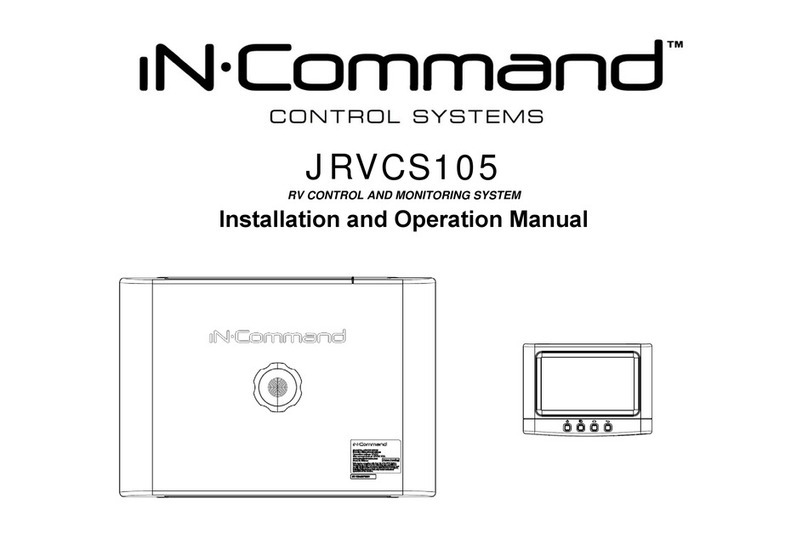
ASA Electronics
ASA Electronics iN-Command JRVCS105 Installation and operation manual
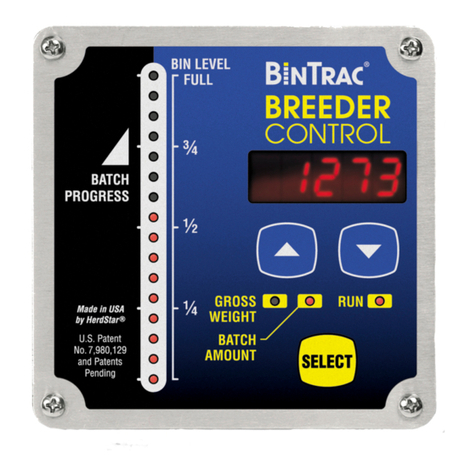
herdstar
herdstar BinTrac Breeder Control installation manual
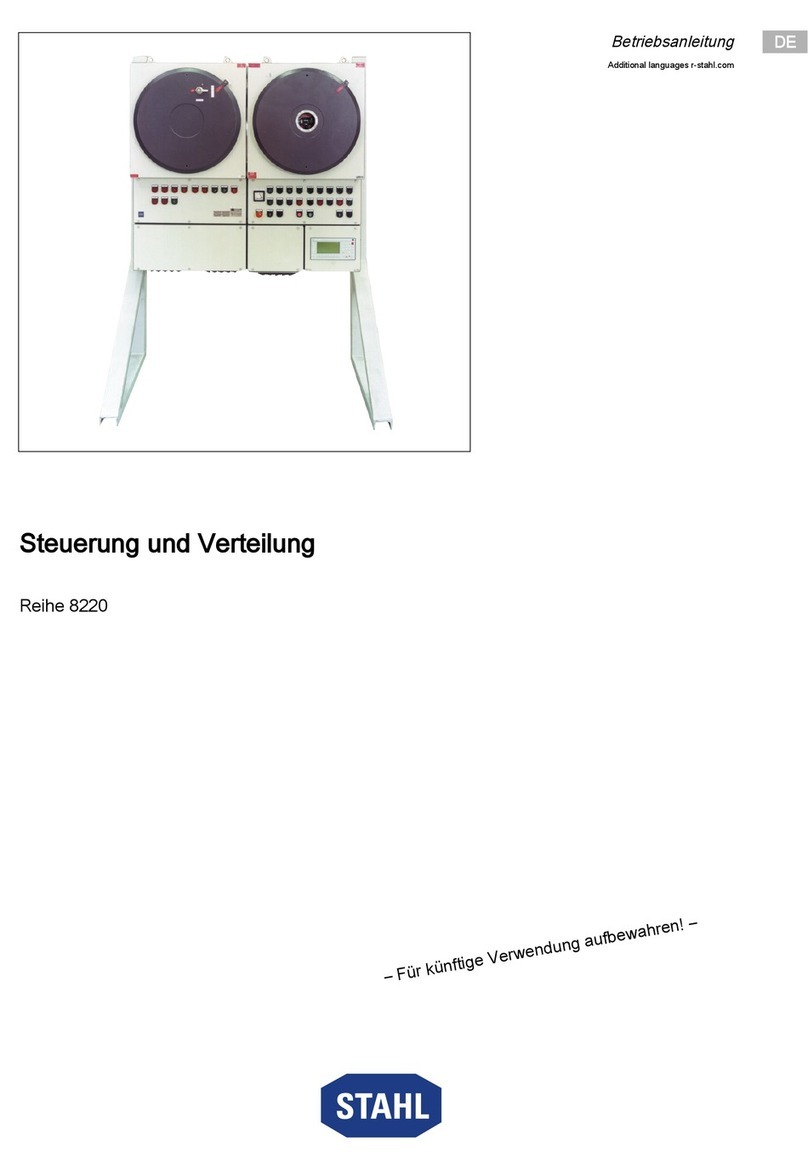
Stahl
Stahl 8220 Series operating instructions
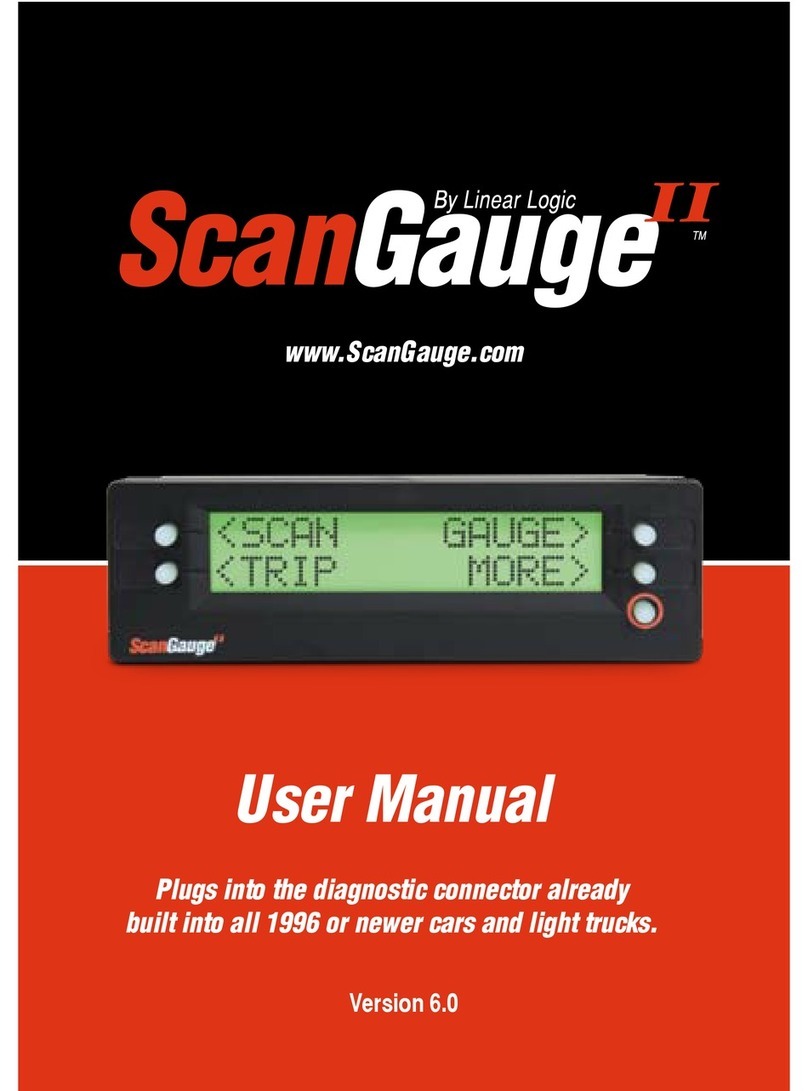
Linear Logic
Linear Logic ScanGauge II user manual
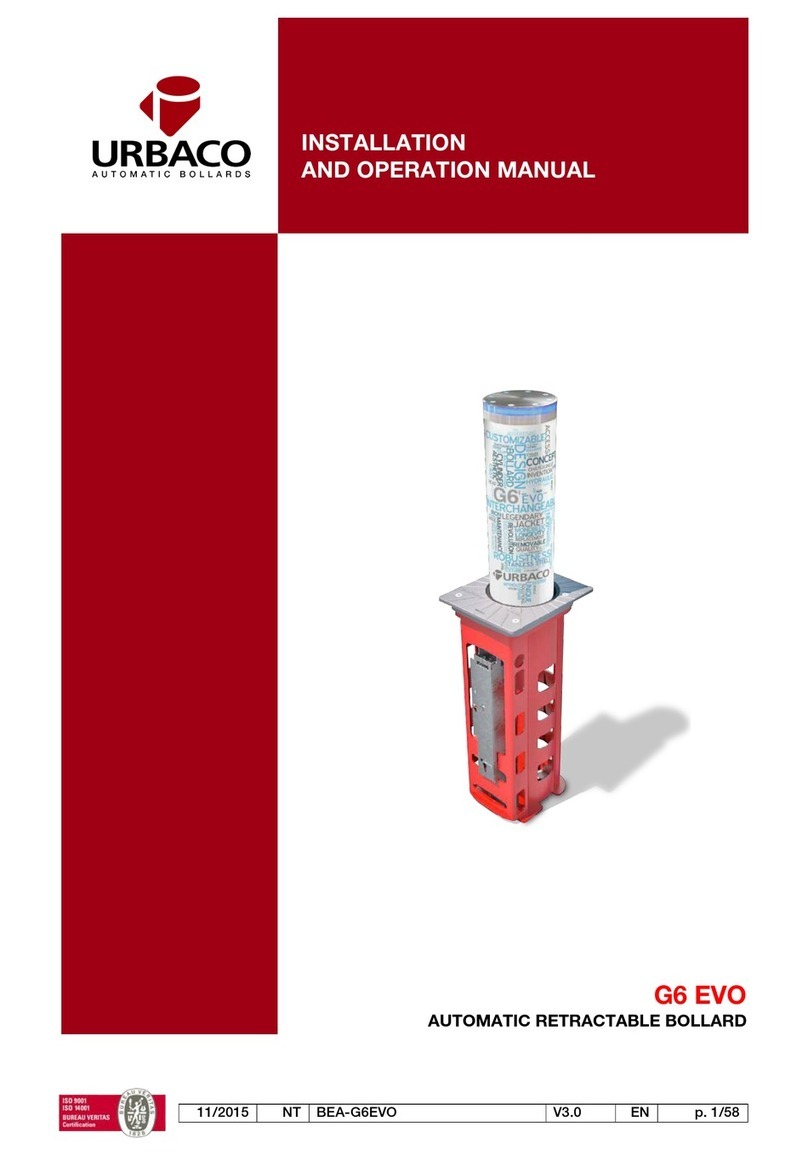
Urbaco
Urbaco G6EVO Installation and operation manual
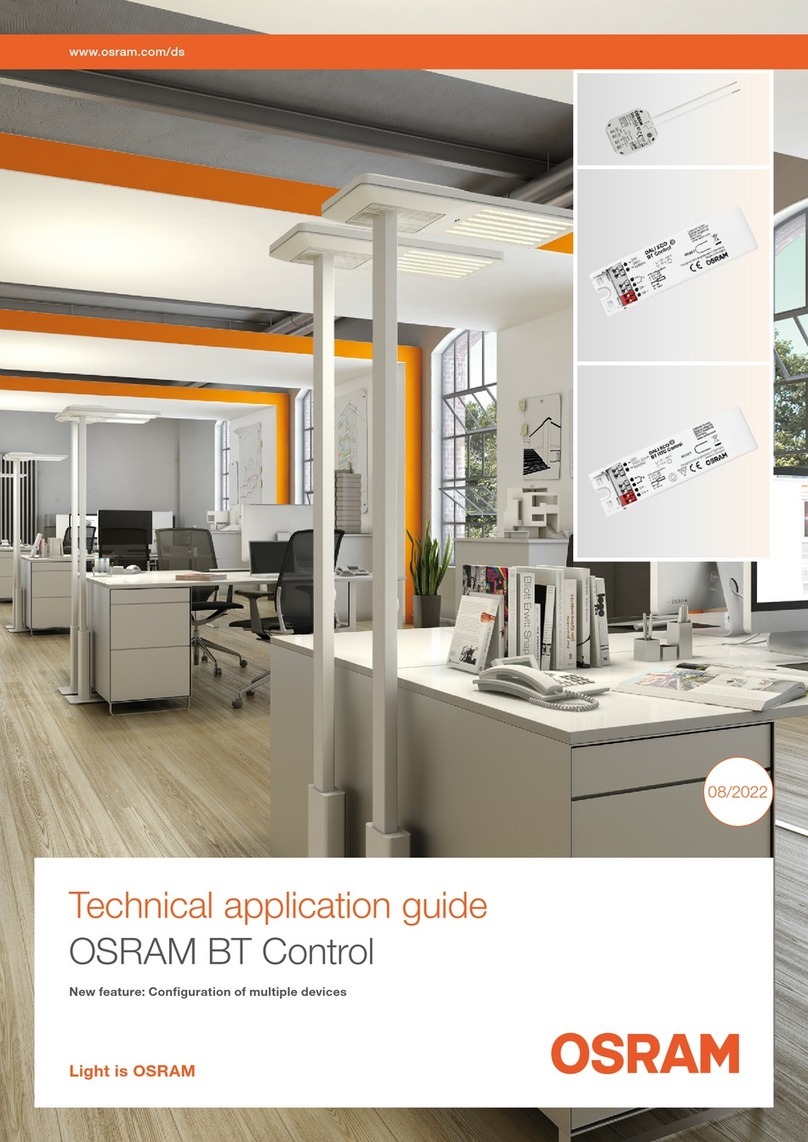
Osram
Osram BT Series Technical application guide
